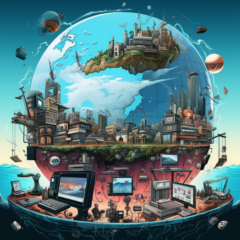
Table of Contents
Introduction
In a world where stress and anxiety often dominate the narrative, a simple smile can go a long way. It’s not just a sign of happiness; it’s a powerful tool that can transform your day and even your life. In this blog post, we’ll delve into the science behind smiling and explore how this simple gesture can have a profound impact on your daily life.
The Science of Smiling
Smiling is more than just a facial expression; it’s a complex interaction between various muscles and our brain. When we smile, our brain releases endorphins, which are natural mood lifters. They also act as natural painkillers and can reduce stress by lowering the levels of the stress hormone cortisol.
The Domino Effect
Smiling has a domino effect. When you smile, people around you are more likely to smile back. This creates a positive feedback loop, as their smile triggers the same endorphin release in their brain, making them feel happier and more relaxed.
Examples of How Smiling Can Help in Daily Life
At Work
- Building Rapport: A smile can help break the ice and make you more approachable, which is particularly useful in a professional setting. It can help you build rapport with colleagues and clients, making collaborations more effective.
- Stress Management: During stressful situations, taking a moment to smile can help lower your stress levels, allowing you to approach problems with a clearer mind.
In Relationships
- Conflict Resolution: A genuine smile can defuse tension and make it easier to resolve conflicts. It shows that you are open to finding a solution and are not confrontational.
- Strengthening Bonds: Sharing a smile with your loved ones can strengthen emotional bonds. It creates a sense of trust and understanding that words often can’t convey.
Personal Well-being
- Boosting Self-esteem: Smiling can make you feel better about yourself and boost your self-esteem. When you smile, you naturally feel more confident, which can be empowering.
- Health Benefits: Studies have shown that smiling regularly can lower your heart rate and reduce blood pressure, contributing to a healthier life.
Conclusion
Smiling is a simple yet powerful tool that can bring about numerous benefits in your daily life. From reducing stress to building stronger relationships, the impact of a smile should never be underestimated. So the next time you find yourself in a challenging situation, remember to smile. It might just be the solution you’re looking for.










